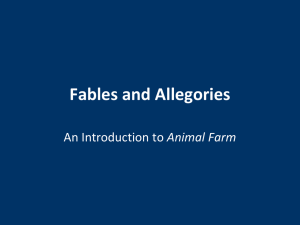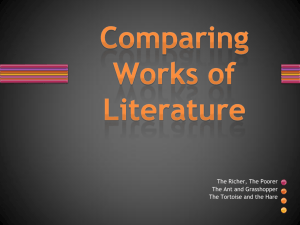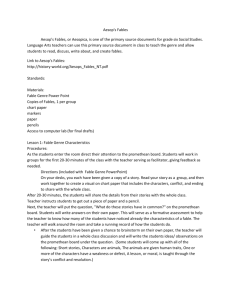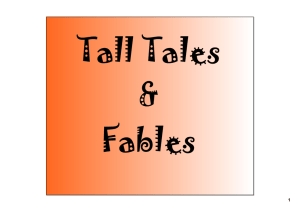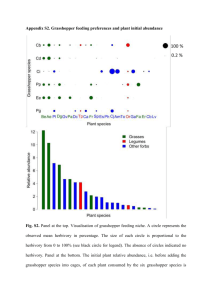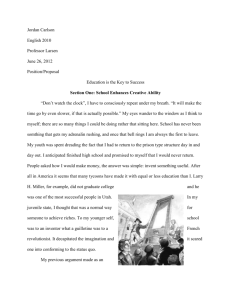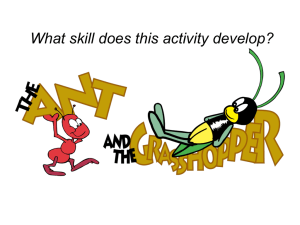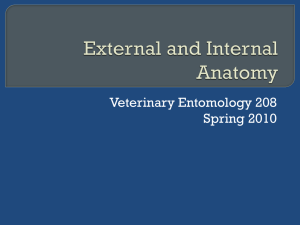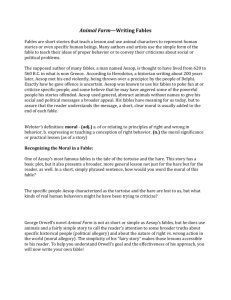Learning Agenda: April 20, 2011
advertisement
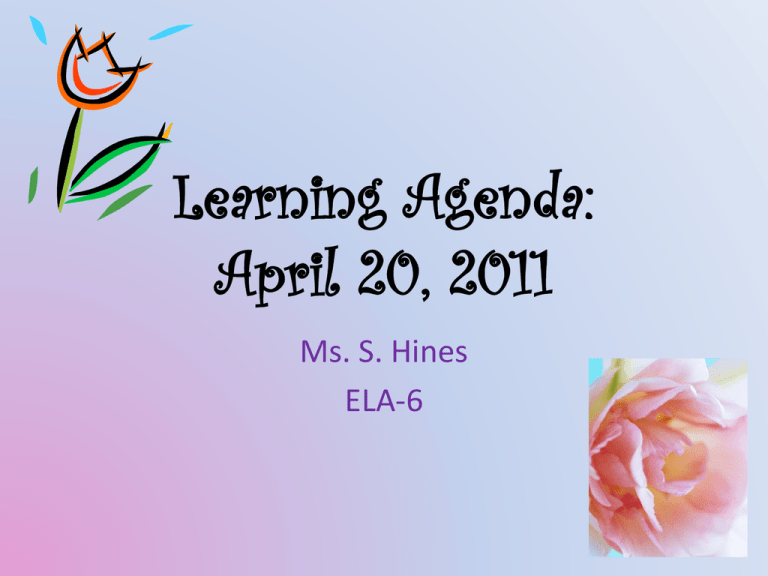
Learning Agenda: April 20, 2011 Ms. S. Hines ELA-6 Warm Up (all blocks) Have your binders on your desk. Remember ELA binders are YOUR responsibility and should accompany you to class DAILY. Pass out graphic organizers (add them to your binders) Create a new entry in your ELA notebook. • Title: Journal entry (Should you live for the present or the future?) • Date: 4/19/2011 • Don’t forget to add this entry to your Table of Contents (TOC). • Is it better to save for the future or enjoy yourself in the present? Explain your answer. –Responses should be at least 3 paragraphs. Essential Questions: What is mythology? Why is important to find, explore, and compare similarities and differences in mythologies from different cultures? Find, explore, and compare similarities and differences in mythologies from different cultures? ELA6R1.i-j Complete my unit graphic organizer and keep it in my binder. What is Mythology? Mythos: “tale” or “story” my·thol·o·gy [mi-thol-uh-jee] –noun, plural -gies. 1. a body of myths, as that of a particular people or that relating to a particular person: Greek mythology. 2. myths collectively. 3. the science or study of myths. 4. a set of stories, traditions, or beliefs associated with a particular group or the history of an event, arising naturally or deliberately fostered: the fascist mythology of the interwar years. Fairy Tales 1.a simple children's story about magical creatures 2.a false story that is meant to trick people Warm Up for B2 and B3 Read “The Ant and the Grasshopper” and answer the five questions below the fable. (Handout) • Fables: teach us lessons about life. –Traditional vs. Modern fables • Traditional fables: often use animal characters to tell a story. It ends with a moral (clever, memorable statement of the fable’s message). • Modern fables: most likely to use human characters. It has a theme that readers have to determine on their own. Name: ______________________________________________ Block: ____ Ms. Hines Unit: Myths, Legends, Folktales, Fairy tale, Fable, and Tall Tales Standards: ELA6R1.i-j (I will find, explore, and compare similarities and differences in mythologies from different cultures ). “Ant and Grasshopper” Aesop pp. 368-369 Key Traits (character’s personality) Ant: hard -working; responsible; plans for the future Grasshopper: lazy; plays too much; fun-loving; slacker The Richer, the Poorer” Dorothy West pp. 370-374 Lottie: Bess: Words and Actions (what was said and done) Ant: works all Summer and refuses Lottie: to give food to the Grasshopper Grasshopper: plays all Summer Bess: and then has to ask the Ant for food Character’s Priority (goals or focus) Ant: save for the winter or hard times Grasshopper: enjoy life and have fun by playing all day Moral or Theme Moral is “in good times prepare (see p. 367) for when the bad times come” Lottie: Bess: Opening • Complete Warm Up (handout) • Mini Lesson: Fairy Tales and Fables • Read aloud and discuss –“Ant and Grasshopper” by Aesop on pp. 368-369 –“The Richer, the Poorer” by Dorothy West on pp. 370-374 1. Finish your graphic organizer (comparing and contrasting the two fables) a. When you finish, place it in the inbox 2. In your notebook, create a new entry a. Date: 4.20.11 b. Title: Comparing fables (“Ant and Grasshopper” and “The Richer, the Poorer”) c. Answer questions #4-6 on p. 375 (Literature Book) 3. Add both fables to your Mythology Unit graphic organizer a. Hint: the one that we used for the two movies Tonight’s Homework (Due: 4.21.11) “The Talking Skull” Reader’s Journey pp. 238-243 Complete #4 on p. 243 On a sheet of paper, you must be able to write the message that the author wants you to know and understand from reading the fable. Illustrate the message. (Must be in color). “Ant and Grasshopper” (fable) Aesop Moral: In the good times prepare for when the bad times come. “The Richer, the Poorer” (fable) Dorothy West Theme: Money can’t buy happiness. “The Talking Skull” (fable) Message:

